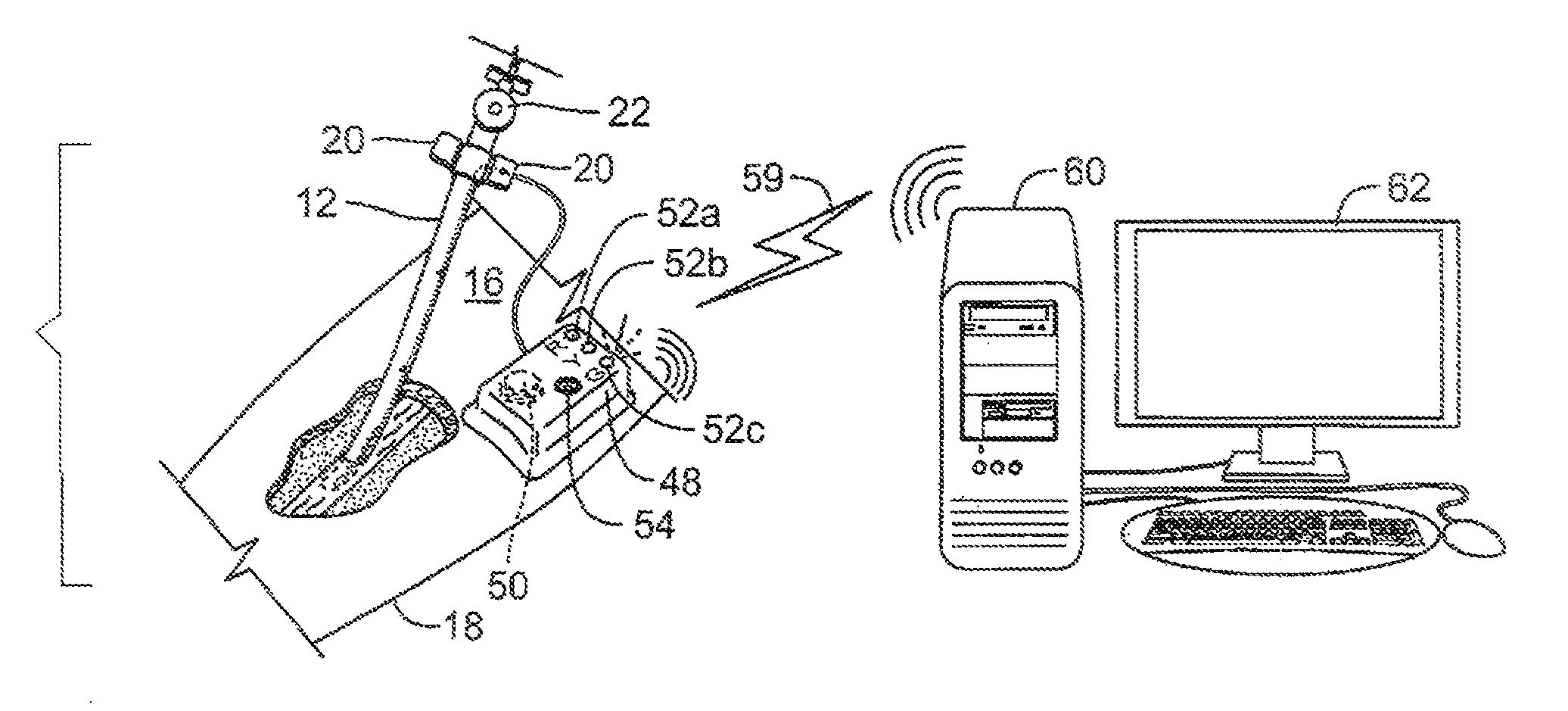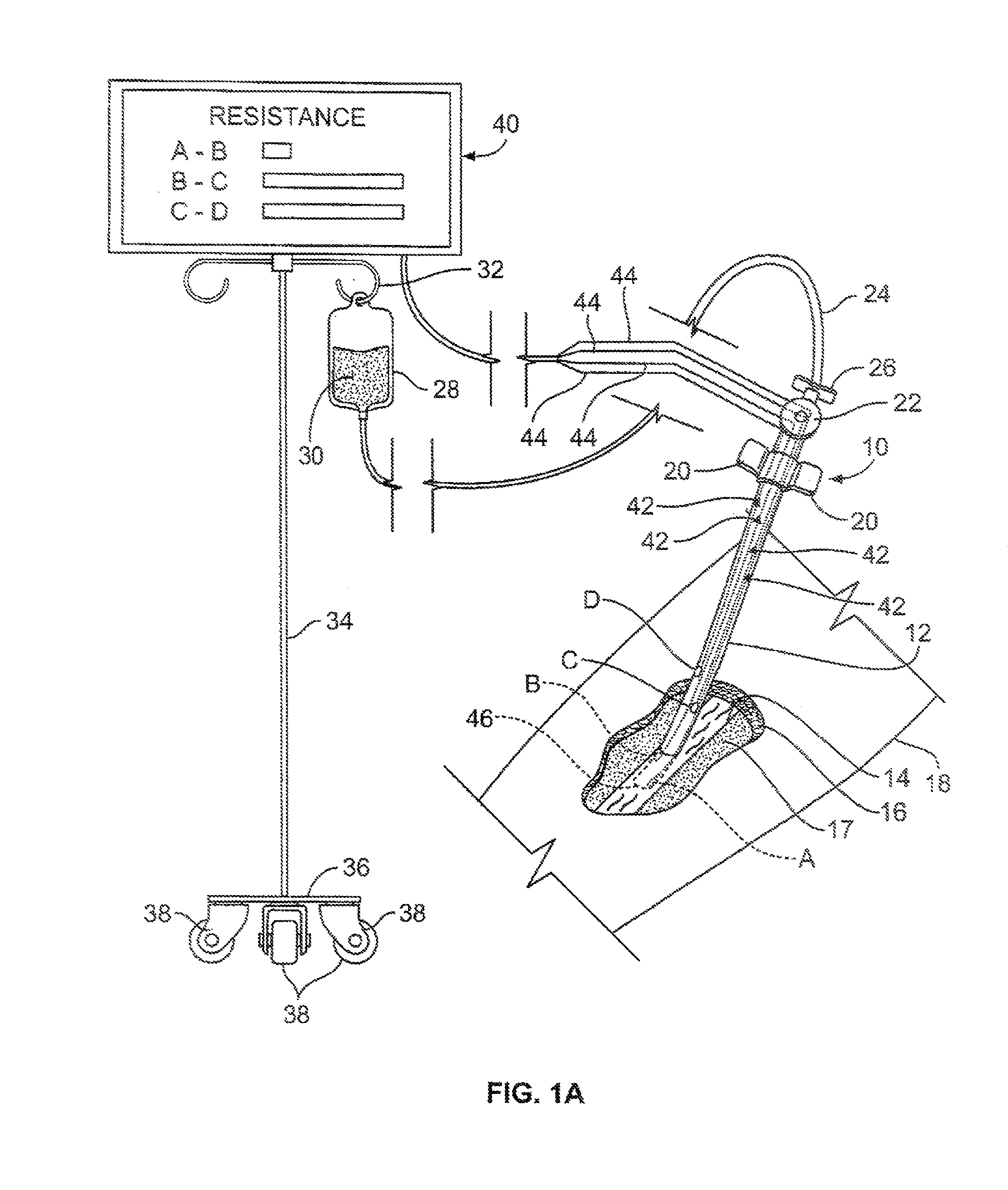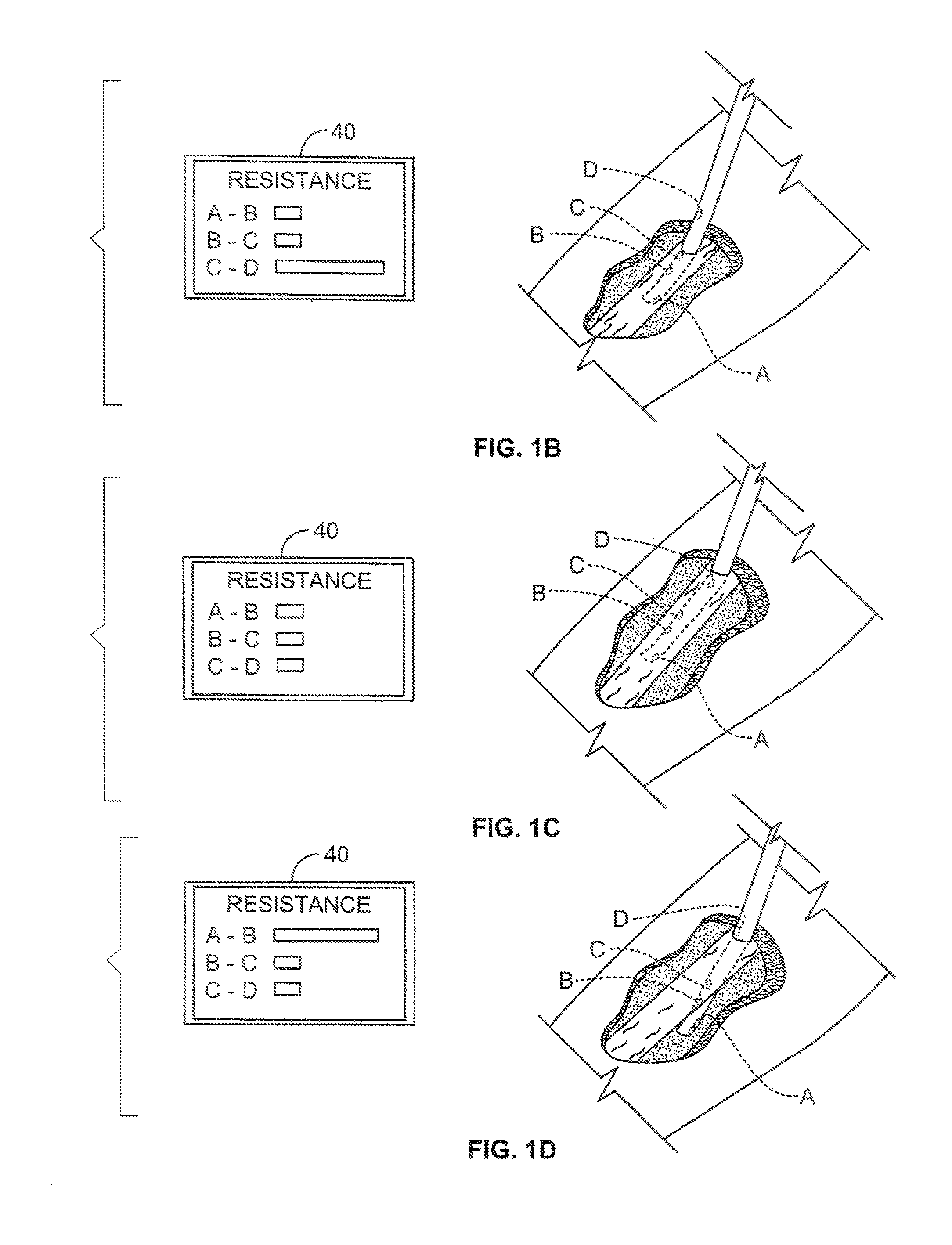Apparatus and method for monitoring catheter insertion
a catheter and catheter insertion technology, applied in the field of intravenous apparatus and methods, can solve the problems of infiltration, potential serious health condition known as infiltration, and complications of patients receiving iv fluid therapy, and achieve the effect of preventing damage or dislocation
- Summary
- Abstract
- Description
- Claims
- Application Information
AI Technical Summary
Benefits of technology
Problems solved by technology
Method used
Image
Examples
first embodiment
[0048]As mentioned above, the first embodiment is illustrated in FIGS. 1A-1D and includes a catheter 10 constructed in accordance with the present invention. The typical catheter 10 consists of a short polymer tubing (a few centimeters long) inserted through the skin into a peripheral vein 14 (any vein generally not inside the chest or abdomen). This is usually in the form of a flexible cannula 12 over-needle device, in which a flexible plastic cannula 12 comes mounted on a metal trocar (needle and trocar not shown as already withdrawn from cannula 12). Once the tip of the needle and cannula 12 are located within the vein 14 the trocar is withdrawn and discarded. The cannula 12 is further advanced inside the vein to an appropriate position and then secured with medical tap or the like over a pair of plastic wings 20 secured to the tubing near a port or hub 22. An IV line 24 connects to the port or hub 22 through a male fluid input 26 that is inserted into the IV line 24. The IV line...
second embodiment
[0053]Turning now to FIG. 2A, an IV cannula with a single conductive spot or sensor 56 near the tip or distal end 46, with a conductive trace 44 running back to the hub 22, and thus to the sensing module 48 which is attached to the patient much like a conductive EEG pad. In this second embodiment, a 50 kHz signal (or other suitable AC freq) is transmitted and received through the cannula at a very low current of 500 μA and voltage by the sensing module 48. The signal impedance will vary significantly when the cannula 12 is in the vein / bloodstream vs insertion just under the skin 18 but not within the vein 14. The sensing module 48 further includes a soft switch or dome switch 50 to initiate the smart IV catheter when it is first taken from its package. Or the sensing module 48 is initiated when the adhesive cover is removed when the catheter is taken out of its packaging and placed onto the forearm 18. There is also an LED 52 and audible piezo horn 54 mounted within the sensing modu...
fourth embodiment
[0062]In FIGS. 5A-B, a fourth embodiment shows the use of an acoustical signature for the apparatus and method to continuously monitor that the cannula 12 is remaining properly inserted within the vein 14 in accordance with the present invention. The cannula 12 includes an acoustical transducer 64 of a broadband 25 to 50 MHz type well known in the art such as the medical transducers manufactured and sold by General Electric Company of Schenectady, N.Y. The transducer 64 is placed near the tip of the cannula 12 such that a large amplitude echo signal from the transducer 64 is continuously monitored to indicate the correct tip placement of the cannula tubing 12 within the vein 14. If suddenly a smaller amplitude echo signal from the transducer 64 is detected then this provides an indication that the tip of the cannula 12 of the catheter 10 is withdrawing from the vein 14 into the subcutaneous tissue surrounding the vein.
[0063]Most high frequency transducers for medical applications ar...
PUM
 Login to View More
Login to View More Abstract
Description
Claims
Application Information
 Login to View More
Login to View More - R&D
- Intellectual Property
- Life Sciences
- Materials
- Tech Scout
- Unparalleled Data Quality
- Higher Quality Content
- 60% Fewer Hallucinations
Browse by: Latest US Patents, China's latest patents, Technical Efficacy Thesaurus, Application Domain, Technology Topic, Popular Technical Reports.
© 2025 PatSnap. All rights reserved.Legal|Privacy policy|Modern Slavery Act Transparency Statement|Sitemap|About US| Contact US: help@patsnap.com



